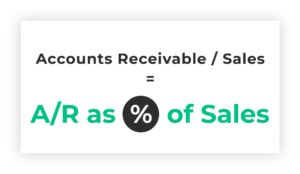An accounts receivable (A/R) analysis report is a tool used to assess your A/R in aggregate, giving you a better understanding of cash flows.
A complete accounts receivable analysis cannot be achieved with one method, so teams will need to combine several techniques. Fortunately, analysis of receivables is straightforward enough with the right tools behind you.
What Is Accounts Receivable Analysis?
Accounts receivable analysis is a detailed review and evaluation of a company’s outstanding receivables to assess financial health, cash flow efficiency, and customer creditworthiness. By systematically examining amounts owed by customers for products or services rendered, businesses gain valuable insights into their liquidity and operational effectiveness. The primary aim of accounts receivable analysis is to identify trends, predict cash inflows, and uncover potential risks associated with delayed or defaulted payments.
An accounts receivable analysis report typically involves several metrics and methodologies, including aging reports, trend analyses, and ratio evaluations. These reports illustrate not just the total outstanding receivables but also the breakdown of overdue accounts, helping managers pinpoint specific areas needing attention. By leveraging advanced accounts receivable analytics, organizations can anticipate future cash flows and proactively address potential financial hurdles.
Accounts receivable analysis reports are critical for establishing accurate financial forecasts, improving collection rates, and minimizing bad debt. Effective analysis involves interpreting data through various lenses, such as historical payment behaviors, credit risk assessments, and client-specific payment trends. Regular accounts receivable analysis supports stronger credit policy formation, better resource allocation, and strategic planning, ultimately enhancing a company’s overall financial stability and growth potential.
Creating an Accounts Receivable Analysis Report
Typically, analysis of receivables will involve assessments of the size of your accounts receivable as well as any allowance for doubtful accounts you make.
Companies need to monitor their investments in accounts receivable to ensure they’re not over-investing or under-investing. There are several ways to go about it, but the most common practices to assess this include reviews of credit policies, assigning credit limits, offering discounts for fast payments, or charging interest on overdue payments. With the right A/R automation platform behind you, these are basic A/R management practices that any company should consider.
But how do you know whether your company is paying too much (or too little) into A/R management? The answer lies in assessing your accounts receivable analytics and leveraging these formulas to get a comprehensive view of your cash flow.
A/R Analysis Methods
There are a variety of methods you can use to measure an accounts receivable workflow.
Typically, accounts receivable are measured as a percentage of sales, which indicates how closely A/R intake relates to direct sales. The calculation for this is simple, just divide your total A/R by your total sales for a given period:

This is a basic first step, but analysts can take things further by utilizing the A/R aging report: a common report that lumps receivables into categories based on how long the invoice has been active. In general, the longer an invoice goes unpaid, the less likely it is statistically that you’ll receive payment for it. This rule can vary based on several criteria, such as individual credit terms applied to specific customers that need to be accounted for.
📈 Streamline Your Accounts Receivable with Gaviti
Discover how Gaviti makes AR management effortless—so you can focus on analysis, not chasing invoices.
Take the Product Tour Today!Trend Analyses
Don’t stop with the aging report. Teams can get deeper insights with a trend analysis, which allows you to plot your receivables on a graph and use a trend line to predict how many receivables will be outstanding in a given future period. This method can also provide insight into issues such as bad debt ratios and other metrics used for long-term forecasting.
The last method we’ll mention is the ratio analysis, typically done through measuring the collection period of your A/R. This assesses the average amount of days an invoice is outstanding before getting paid, found with a simple formula:

This formula gives an average A/R collection period, though the number of days listed here won’t be enough to draw conclusions. You’ll need to assess the days in this collection period and compare it against that client’s credit terms and payment history to determine whether the collection window is problematic.
Take Charge of Cash Flow With Accounts Receivable Analytics
These methods assessed together provide a strong view of A/R health. Assessing the A/R collection period provides a broad sense of your company’s ability to collect on receivables, while the aging report analysis provides a deeper view into which specific receivables are causing delays. And finally, the trend analysis report indicates whether these problems have changed over time.
All of these details should be compared against each client’s established credit policy and the cash flow status of your company overall. Low A/R collection rates don’t necessarily indicate problems – but if your collections rate continues to underperform over time, it might be worth considering solutions.
How Do Payment Portals Help in Performing Better AR Analysis?
Payment portals play a pivotal role in enhancing the accuracy and depth of accounts receivable analysis. By providing a centralized, digital platform for processing customer payments, these portals significantly streamline the collection process and yield precise, real-time data essential for generating accurate accounts receivable analysis reports.
One of the key advantages of utilizing payment portals is the immediate updating of payment statuses, which directly improves the reliability of aging reports. As payments are recorded instantly, accounts receivable analytics become more accurate and reflective of current financial realities. Additionally, payment portals allow companies to track and analyze payment behaviors across diverse payment methods, enabling a deeper understanding of customer preferences and trends.
Another critical benefit is the reduction of errors associated with manual data entry. By automating the capture of transactional data, payment portals ensure consistency and accuracy in accounts receivable reports, minimizing discrepancies and confusion. This accuracy leads to more insightful analytics, providing actionable data for better decision-making.
For a deep dive into which solutions can help you reclaim due payments faster, contact us at Gaviti and book a free demo today! We’ll walk you through our platform, assess your company and help you explore technologies that ensure you’ll stay on top of your A/R reporting as well as benefit from automation to bring overdue payments in faster.






















